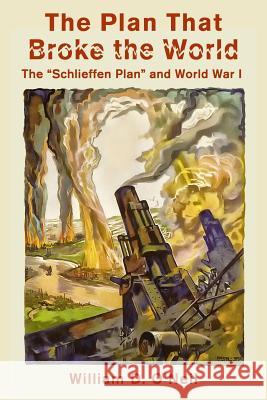The Plan That Broke the World: The "Schlieffen Plan" and World War I » książka
The Plan That Broke the World: The "Schlieffen Plan" and World War I
ISBN-13: 9781481955850 / Angielski / Miękka / 2014 / 204 str.
"Will O'Neil has written a truly superb account of the events that led to the German defeat in World War I. His superb research, analysis, and insights make this work a must read for all those who study history or wish to learn from the critical mistakes of the past. This is the best writing on this subject I have read." -- General Anthony C. Zinni USMC (Retired)
"A superb read, even for those who think themselves already well-versed in this topic." -- John T. Kuehn, Ph.D., William A. Stofft Professor, U.S. Army Command and General Staff College. Author of Agents of Innovation.
As July turned to August in 1914, all the Great Powers of Europe mobilized their armies and then went to war with one another. It would take more than 50 months for peace to return, and the better part of a century to heal many of the wounds.
Germany acted only near the end of a chain of actions by other nations, but German troops moved first and set the pattern for the war. They smashed through neutral Belgium before thrusting deeply into France, coming close to knocking France out of the war, and soon were making huge inroads in Russia as well. It was a remarkable performance for an army outnumbered by its foes. Yet four years later the German Empire was swept away, its army a shell, its people starving, its government in chaos.
How did the leaders of Imperial Germany come to make the decisions that committed their nation to an all-or-nothing war based on a highly risky strategy?
This book explores the background of the decisions, what those who made them knew and thought, what they failed to look at and why. It explains the Prussian Great General Staff (Grosser Generalstab) and the part it played in planning and preparing for war. It follows the action of August and the first part of September 1914 to show where they went wrong and how other options could have achieved Germany's aims with far lower risk and cost. These options were realistically available and the book probes why the nation's leaders failed to consider or rejected them.
The German leaders in 1914 weren't Hitler. They valued security over conquest and didn't go to war to expand their empire. They weren't the first to light the fuze that led to war. They thought and acted as leaders very often do. We can understand them in terms of patterns we see all around us, patterns we even see in ourselves. Their decisions had results that were uniquely catastrophic, but the way they were reached was quite ordinary.
"The Plan That Broke the World" explains it all briefly and crisply, in non-technical terms, drawing on the latest research. There are 35 images, many unique to this book, to illustrate specific aspects of the story. Four charts and thirteen high-quality maps, all but one drawn especially for this book, present complex information in forms that are immediately understandable. There's no other book like it.
The book Web site is whatweretheythinking.williamdoneil.com/theplanthatbroketheworld
This difference between the first and second editions comes in the Introduction. A PDF copy of the revised Introduction may be downloaded from the Web site.
"The Plan That Broke the World" is a case study in the What Were They "Thinking"? series. The series Web site is whatweretheythinking.williamdoneil.com/"












